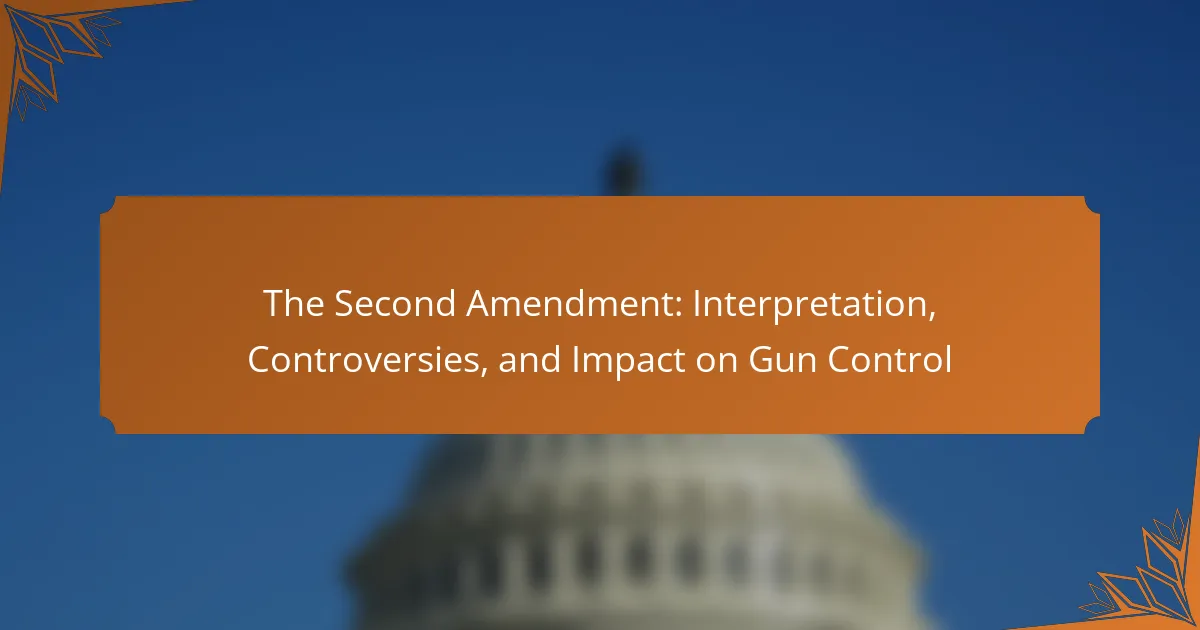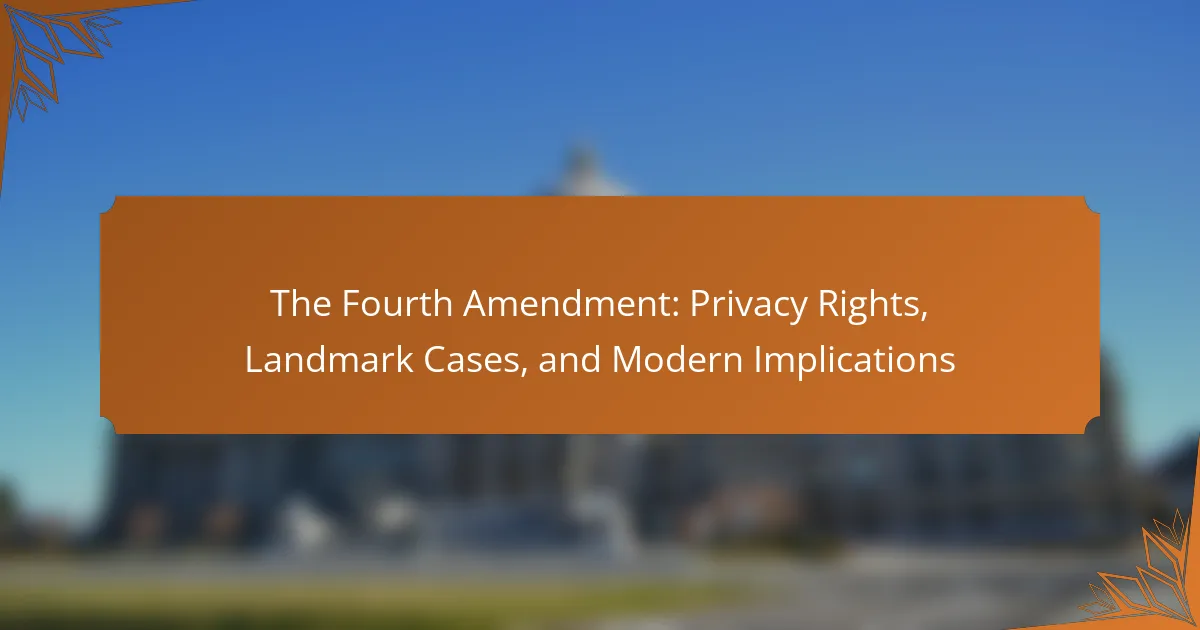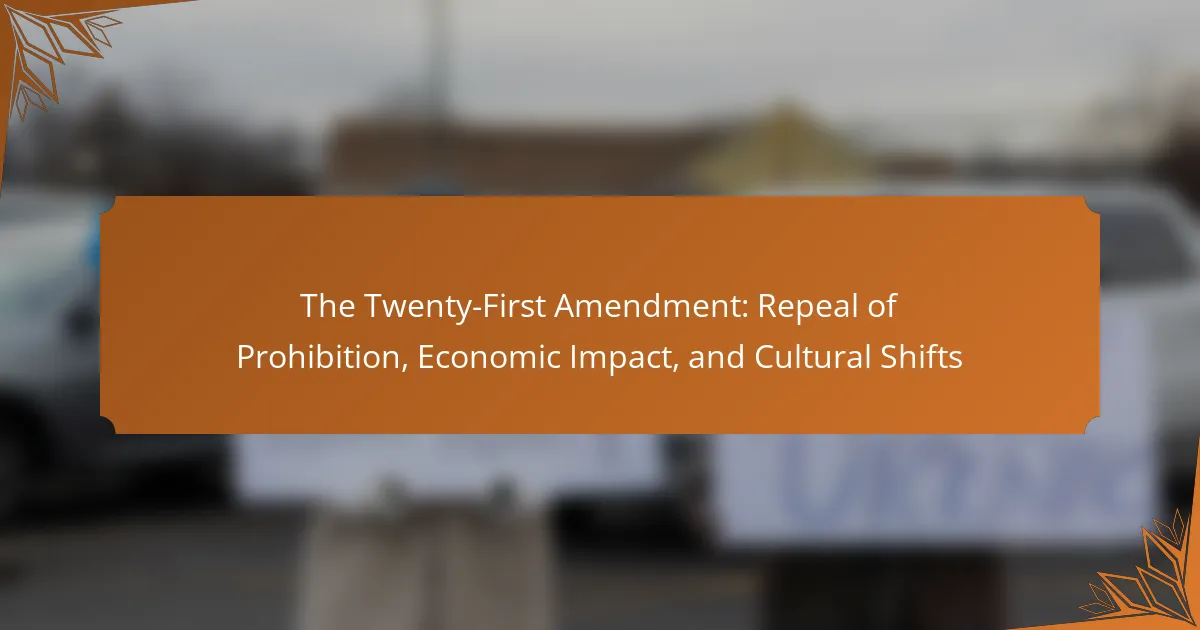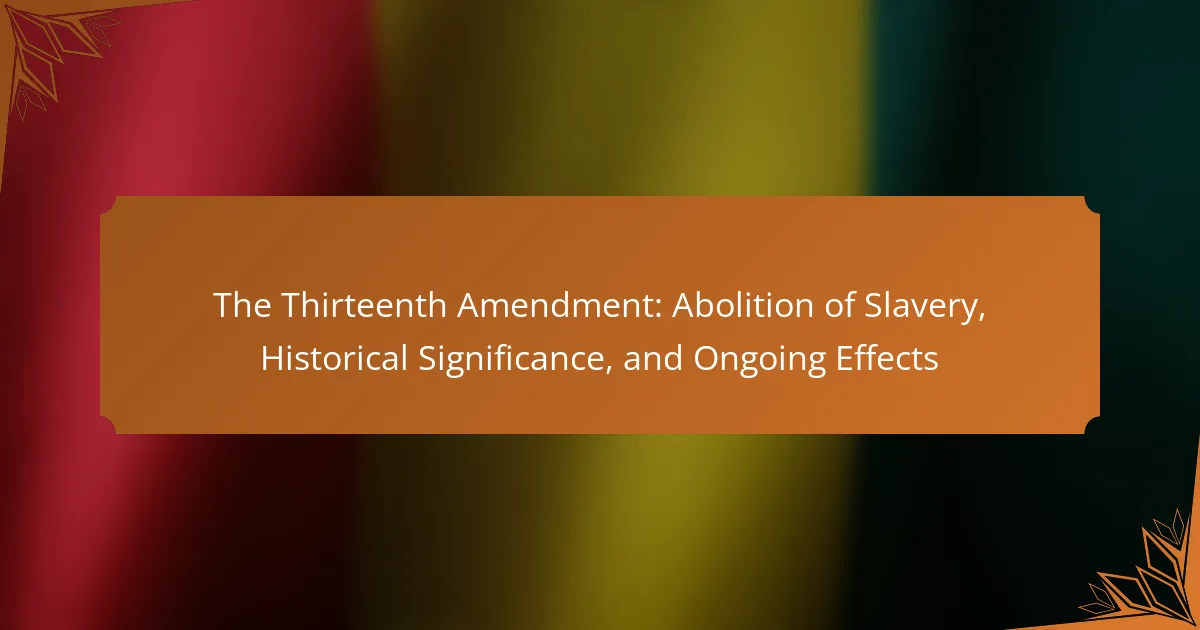The Second Amendment is a key provision of the United States Constitution that protects the right of individuals to keep and bear arms. Ratified on December 15, 1791, as part of the Bill of Rights, it has sparked significant legal and political discussions regarding gun ownership and regulation. The article will explore the various interpretations of the Second Amendment by the Supreme Court, highlighting landmark cases that have shaped gun control laws in the United States. Additionally, it will address the ongoing controversies surrounding this amendment and its impact on contemporary discussions about firearms legislation.
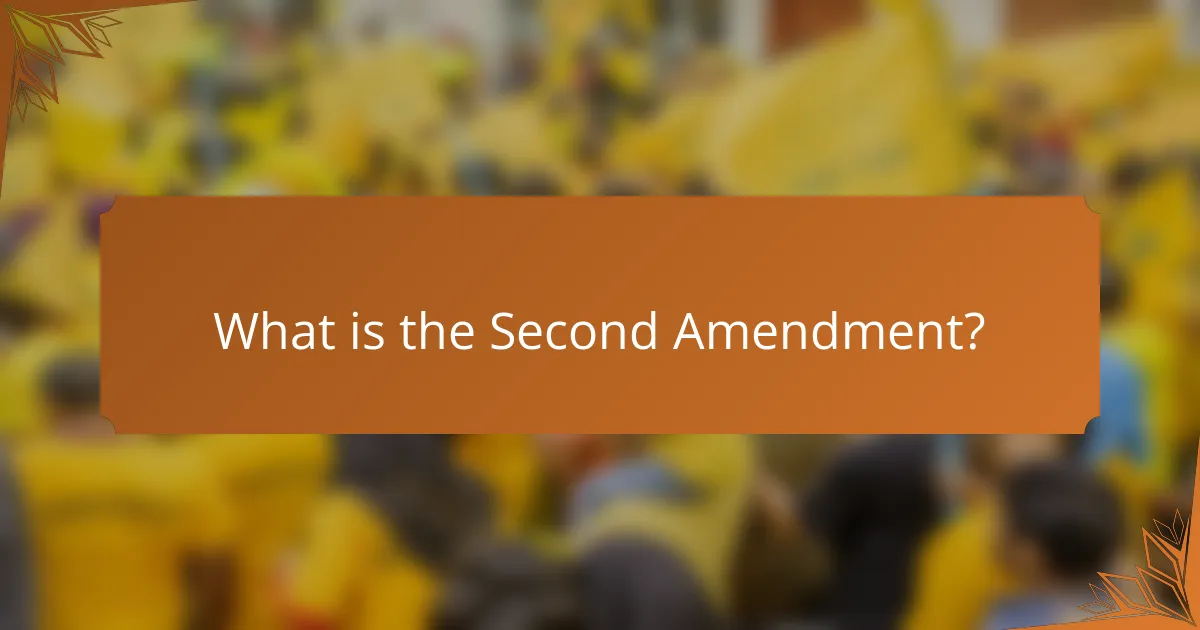
What is the Second Amendment?
The Second Amendment is a provision in the United States Constitution. It states, “A well regulated Militia, being necessary to the security of a free State, the right of the people to keep and bear Arms, shall not be infringed.” This amendment was ratified on December 15, 1791, as part of the Bill of Rights. It addresses the right to possess firearms and has been the subject of extensive legal and political debate. The Supreme Court has interpreted this amendment in various landmark cases, influencing gun control laws across the nation.
How does the Second Amendment define the right to bear arms?
The Second Amendment defines the right to bear arms as the right of individuals to possess and carry weapons. It states, “the right of the people to keep and bear Arms, shall not be infringed.” This language suggests a protection of personal firearm ownership. The historical context indicates a focus on self-defense and resistance against tyranny. The Supreme Court has interpreted this amendment in various cases, affirming individual rights. Notably, in District of Columbia v. Heller (2008), the Court ruled that the Second Amendment protects an individual’s right to possess a firearm unconnected with service in a militia. This interpretation has significant implications for gun control laws across the United States.
What historical context influenced the creation of the Second Amendment?
The historical context that influenced the creation of the Second Amendment includes the colonial experience and the English Bill of Rights. The American colonies faced threats from British rule, leading to a strong desire for self-defense. Militias were essential for protection against both foreign and domestic threats. The English Bill of Rights of 1689 affirmed the right to bear arms for self-defense. This influenced American colonists who sought similar protections in their new government. The Second Amendment was ratified in 1791, reflecting these historical concerns. It aimed to ensure the ability of the people to resist tyranny and maintain security. The founders viewed an armed citizenry as vital for the preservation of liberty.
What are the key phrases in the Second Amendment and their meanings?
The key phrases in the Second Amendment are “A well regulated Militia,” “the right of the people to keep and bear Arms,” and “shall not be infringed.” “A well regulated Militia” refers to a group of citizens organized for military service. This phrase suggests the importance of collective defense and community safety. “The right of the people to keep and bear Arms” emphasizes individual ownership and use of weapons. This phrase has been central to debates on personal gun rights. “Shall not be infringed” indicates that this right should not be violated or restricted. This phrase underlines the constitutional protection of gun ownership. These interpretations have shaped legal discussions and rulings regarding firearms in the United States.
Why is the Second Amendment considered controversial?
The Second Amendment is considered controversial due to differing interpretations regarding gun rights and regulation. Some view it as a fundamental right to individual gun ownership. Others believe it primarily protects state militias. This division fuels debates on gun control laws. Court cases, like District of Columbia v. Heller (2008), have shaped its interpretation. The ruling affirmed individual gun ownership rights. However, it left room for regulations, leading to ongoing disputes. Public opinion also varies widely on gun control measures. These factors contribute to the amendment’s contentious status in American society.
What are the main arguments for and against gun rights?
The main arguments for gun rights include the protection of personal freedom and self-defense. Proponents argue that the Second Amendment guarantees individuals the right to bear arms. They believe that owning firearms deters crime and allows citizens to protect themselves. Statistics show that many Americans feel safer with a firearm in their homes.
On the other hand, the main arguments against gun rights focus on public safety and the prevention of violence. Opponents argue that more guns lead to more gun-related deaths. They cite studies indicating that countries with stricter gun laws have lower rates of gun violence. Advocates for gun control emphasize the need for regulations to prevent firearms from falling into the wrong hands.
How have interpretations of the Second Amendment evolved over time?
Interpretations of the Second Amendment have evolved significantly since its ratification in 1791. Initially, the amendment was understood primarily in the context of state militias. Early court cases, such as United States v. Miller in 1939, upheld this collective rights view, emphasizing militia service. However, in the late 20th century, the interpretation began shifting towards individual rights. The landmark Supreme Court case District of Columbia v. Heller in 2008 affirmed an individual’s right to possess firearms for self-defense within the home. This decision marked a pivotal change, emphasizing personal rights over militia service. Subsequent cases, like McDonald v. City of Chicago in 2010, further extended this interpretation to state laws. Thus, the evolution reflects a transition from collective to individual rights in Second Amendment jurisprudence.
What impact does the Second Amendment have on gun control laws?
The Second Amendment impacts gun control laws by affirming the right to bear arms. This constitutional provision has been interpreted to limit government regulation of firearms. Courts have ruled that individuals possess the right to own guns for self-defense. For example, the Supreme Court case District of Columbia v. Heller (2008) established that the Second Amendment protects an individual’s right to possess a firearm unconnected with service in a militia. This ruling has influenced various state and federal gun control measures. Laws that impose strict regulations may face legal challenges based on Second Amendment rights. The ongoing debates around gun control often reference this amendment as a central point of contention.
How do different states interpret the Second Amendment in their gun laws?
Different states interpret the Second Amendment in diverse ways, leading to varying gun laws. Some states adopt a broad interpretation, emphasizing individual rights to own firearms. For example, Texas allows open carry and has minimal restrictions on gun ownership. Conversely, states like California implement stricter regulations, including background checks and restrictions on certain types of firearms.
These interpretations stem from historical context and legal precedents. The Supreme Court’s 2008 decision in District of Columbia v. Heller affirmed an individual’s right to possess a firearm for self-defense. However, states retain the authority to regulate gun ownership and use.
Consequently, interpretations vary significantly. States like New York enforce strict licensing requirements. Meanwhile, states such as Alaska allow constitutional carry, requiring no permit for concealed firearms. These differences reflect the ongoing debate surrounding the Second Amendment and its implications for state-level gun laws.
What role does the Second Amendment play in recent gun control debates?
The Second Amendment plays a central role in recent gun control debates. It asserts the right of individuals to keep and bear arms. This constitutional provision is often cited by advocates against stricter gun regulations. They argue that any limitations infringe upon this right. Conversely, proponents of gun control emphasize public safety concerns. They interpret the Second Amendment as allowing for reasonable regulations. Recent Supreme Court rulings, such as District of Columbia v. Heller (2008), affirm individual gun ownership rights. However, these rulings also recognize the government’s authority to impose certain restrictions. This ongoing legal interpretation influences the current discourse on gun control policies.
How do Supreme Court rulings shape the understanding of the Second Amendment?
Supreme Court rulings significantly shape the understanding of the Second Amendment. Landmark cases, such as District of Columbia v. Heller in 2008, clarified that the Second Amendment protects an individual’s right to possess firearms for self-defense. This ruling overturned previous interpretations that linked gun ownership strictly to militia service. Additionally, McDonald v. City of Chicago in 2010 extended the Heller decision, confirming that the Second Amendment applies to state and local governments. These rulings influence legislative actions and public perceptions about gun rights and regulations. They establish precedents that guide lower courts in future cases. The evolving interpretation impacts debates on gun control and individual liberties. Overall, Supreme Court decisions play a crucial role in defining the legal landscape surrounding the Second Amendment.
What are the landmark Supreme Court cases related to the Second Amendment?
The landmark Supreme Court cases related to the Second Amendment include District of Columbia v. Heller (2008) and McDonald v. City of Chicago (2010). In District of Columbia v. Heller, the Court held that the Second Amendment protects an individual’s right to possess a firearm unconnected with service in a militia. This case established that individuals have the right to own guns for self-defense within their homes. In McDonald v. City of Chicago, the Court ruled that the Second Amendment applies to state and local governments through the Fourteenth Amendment. This decision further extended the protections of the Second Amendment, affirming that states cannot infringe upon an individual’s right to bear arms. Both cases significantly shaped the legal landscape surrounding gun rights in the United States.
How do these rulings affect state and federal gun control legislation?
Recent rulings on the Second Amendment significantly influence state and federal gun control legislation. These rulings often clarify the scope of the right to bear arms. For instance, decisions from the Supreme Court can invalidate existing laws that restrict gun ownership. This leads to a re-evaluation of state laws, as states must align their regulations with federal interpretations. Additionally, rulings can set precedents that affect future legislation and judicial challenges. Courts may strike down laws that are deemed unconstitutional based on these interpretations. This creates a ripple effect, prompting states to reconsider their gun control measures. The impact of these rulings can lead to increased access to firearms in some jurisdictions. Conversely, states may seek to implement new regulations that comply with judicial standards while addressing public safety concerns.
What are the social implications of the Second Amendment?
The social implications of the Second Amendment include debates over gun rights and public safety. The Second Amendment protects an individual’s right to bear arms. This right has led to a culture of gun ownership in the United States. Surveys show that a significant portion of Americans believe in the right to own firearms. Conversely, this amendment also raises concerns about gun violence and safety. Research indicates a correlation between higher gun ownership rates and increased gun-related incidents. Communities grapple with balancing individual rights and collective security. The ongoing discourse shapes legislation and influences public opinion on gun control measures.
How does the Second Amendment influence public opinion on gun ownership?
The Second Amendment significantly influences public opinion on gun ownership by enshrining the right to bear arms in the U.S. Constitution. This constitutional protection fosters a strong belief among many Americans that gun ownership is a fundamental right. Surveys indicate that a majority of Americans support the Second Amendment and view it as essential for personal freedom and self-defense. According to a 2021 Gallup poll, 57% of Americans believe that the laws covering the sale of firearms should be less strict. This reflects a widespread perception that gun ownership is integral to American identity and culture. Additionally, the Second Amendment’s interpretation by the Supreme Court, particularly in cases like District of Columbia v. Heller (2008), reinforces the individual right to own firearms. This legal backing shapes public discourse and influences attitudes toward gun control legislation.
What are the cultural factors that affect perceptions of the Second Amendment?
Cultural factors that affect perceptions of the Second Amendment include regional attitudes, historical context, and societal values. In the United States, gun ownership is often tied to individualism and self-reliance, particularly in rural areas. Conversely, urban populations may prioritize public safety and gun control measures. Historical events, such as the Civil Rights Movement and instances of gun violence, shape public opinion on gun rights. Additionally, media portrayal of firearms influences societal perceptions. Research indicates that cultural narratives around freedom and security play significant roles in shaping views on the Second Amendment. For instance, surveys show that beliefs about gun rights vary significantly across different demographics and regions.
What are the practical considerations for gun owners regarding the Second Amendment?
Gun owners must consider various legal and practical aspects of the Second Amendment. The Second Amendment grants the right to bear arms, but this right is subject to regulation. Gun owners should be aware of state and federal laws governing firearm ownership. These laws include background checks, waiting periods, and restrictions on certain types of firearms. Compliance with local laws is crucial, as they can vary significantly. Additionally, gun owners should understand their rights regarding self-defense and the use of firearms in public spaces. Awareness of potential liabilities when using a firearm is also essential. Legal repercussions can arise from improper use or storage of firearms. Understanding these considerations helps ensure responsible gun ownership.
How can gun owners ensure compliance with both federal and state laws?
Gun owners can ensure compliance with both federal and state laws by staying informed about the regulations governing firearm ownership. They should regularly review federal laws, such as the Gun Control Act of 1968, which outlines prohibited persons and licensing requirements. Additionally, they need to understand their specific state laws, which can vary significantly in areas like background checks, waiting periods, and concealed carry permits.
Engaging with local law enforcement or legal experts can provide clarity on complex legal issues. Gun owners should also keep abreast of any changes in legislation, as laws can evolve. Joining local or national gun advocacy organizations can offer resources and updates on compliance. Furthermore, maintaining proper documentation for all firearms is crucial for legal ownership and transfer.
By following these steps, gun owners can better navigate the legal landscape and reduce the risk of unintentional violations.
What resources are available for understanding the rights and responsibilities under the Second Amendment?
Legal textbooks provide detailed analysis of the Second Amendment. Notable resources include “The Second Amendment: A Biography” by Michael Waldman. Scholarly articles in law journals discuss interpretations and case law. Websites like the National Constitution Center offer accessible summaries and historical context. Government publications outline rights and responsibilities related to gun ownership. Additionally, organizations such as the NRA provide resources on legal rights. Online courses and lectures from universities also cover the Second Amendment comprehensively.
The Second Amendment is a provision in the United States Constitution that protects the right of individuals to keep and bear arms, ratified on December 15, 1791. This article examines its historical context, key phrases, and the evolution of its interpretation, particularly through landmark Supreme Court cases such as District of Columbia v. Heller and McDonald v. City of Chicago. It also explores the ongoing controversies surrounding gun rights versus regulations, public opinion on gun ownership, and the implications for state and federal gun control laws. Additionally, practical considerations for gun owners regarding compliance with legal requirements and available resources for understanding Second Amendment rights are addressed.
